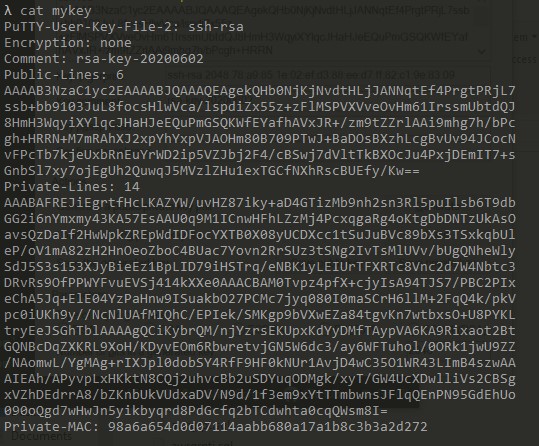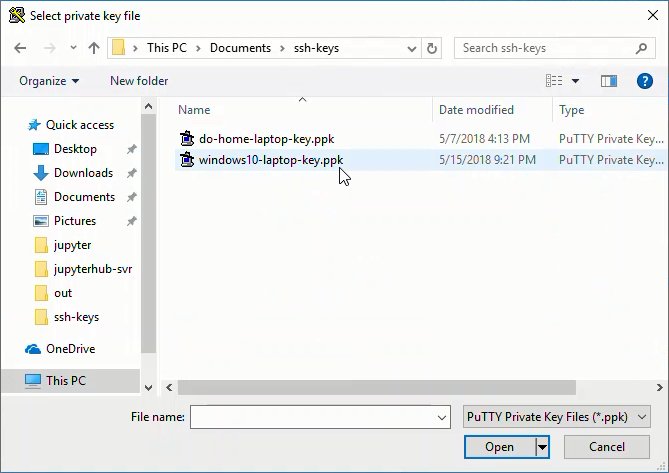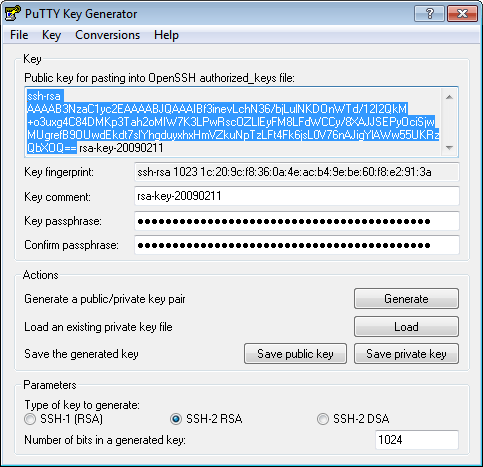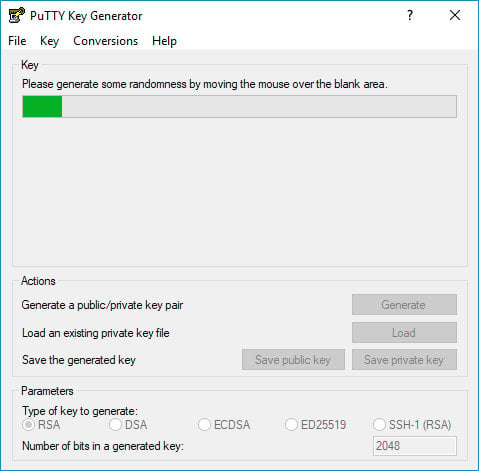
- #PUTTY SSH PRIVATE KEY INSTALL#
- #PUTTY SSH PRIVATE KEY GENERATOR#
- #PUTTY SSH PRIVATE KEY SOFTWARE#
- #PUTTY SSH PRIVATE KEY DOWNLOAD#
If you need to see the public key in the right format after the private key has been saved: You can click Save public key as well, but take note: The format PuTTYGen uses when it saves the public key is incompatible with the OpenSSH authorized_keys files used for SSH key authentication on Linux servers. We strongly recommend using a passphrase, but you can press ENTER to bypass this prompt. If you have not entered a passphrase, you will be asked to confirm that you want to save the key without one.

You can name your key whatever you’d like, and the extension. When you’re done, click the Save private key button and select a secure location to keep it.
#PUTTY SSH PRIVATE KEY SOFTWARE#
You’ll need to provide your passphrase every time you use this key (unless you use SSH agent software that stores the decrypted key).

This improves security by preventing someone who gains access to your private key from using it without also knowing the passphrase. Next, you’ll be prompted to enter a passphrase for your SSH key. Be sure to scroll within the text area so you copy the entire key. Copy this into your clipboard now if you plan to add it to your DigitalOcean account or to servers. When the key is generated, you’ll see the public key displayed in a text box. This randomness, known as entropy, is used to create keys in a secure fashion so that other people can’t reproduce them. You might be prompted to “generate some randomness by moving the mouse over the blank area”. When you’re ready, click the Generate button on the right-hand side.

However, Fedora 33’s new encryption requirements will not accept the default RSA algorithm, so choose ECDSA or another supported algorithm when creating a key for use with Fedora 33. You can customize the Parameters at the bottom if you like, but the default values are appropriate in most situations. The key generation program looks similar to this:
#PUTTY SSH PRIVATE KEY INSTALL#
Next, install it on your local computer by double clicking it and using the installation wizard.Īfter the programs are installed, start the PuTTYgen program through your Start Menu or by tapping the Windows key and typing puttygen. msi file in the Package files section at the top of the page, under MSI (‘Windows Installer’).
#PUTTY SSH PRIVATE KEY DOWNLOAD#
#PUTTY SSH PRIVATE KEY GENERATOR#
Click Save, close the PuTTY Key Generator window and remember the location of the private key file for future use.Īnother option is to convert the ppk format to an OpenSSH format using the PuTTygen program performing the following steps:.This ensures that you aren't overwriting the original private key. ppk (PuTTY Private Key Files), by entering the. Name the privateKey.ppk file and save as type.An easier way is to use the private key without the ppk format. Note: If you're planning to use the private key with the ppk format for a SOCKS5 proxy connection on Linux, then you must set a passphrase. If you decide to enter a passphrase, then remember it, because you can't access the instance without it. However, having a passphrase makes it complicated to automate, so decide whether or not to add a passphrase in the field. Note: The warning message suggests that you use a passphrase for extra privacy so no one can access the instance with just the private key. In the PuTTYgen Warning dialog box, click Yes.This comment appears on your PuTTY screen when you connect to your VM.

Change the key comment from imported-openssh-key to something meaningful.In the PuTTYgen Notice dialog box, click OK.Find and select the Private Key file that you unzipped from the sshkeybundle.zip file, after you created an Oracle Cloud service instance.Change the PuTTY Private Key Files (*.ppk) drop-down menu option to All Files (*.*).This tutorial is for cloud services that allow SSH access to their VMs and therefore, you create a public/private key for the SSH access. Note: Some Oracle Public Cloud services such as Oracle Storage Cloud Service don't provide access to their VMs with private keys. If you don't have these, then create a cloud service instance and generate a public/private key pair for it. and that you have a privateKey file unzipped from the sshkeybundle.zip that's generated when creating the service instance. For this tutorial, we assume that you already created an Oracle Cloud service instance named DB12C-ABC.


 0 kommentar(er)
0 kommentar(er)
